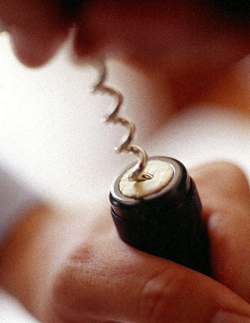Nov 6 2014
Researchers at UPM, INIA-CIFRO and the Universidad de Córdoba have shown that the application of infrared spectroscopy techniques can enhance the control of parameters that determine the cork performance in a bottle.
 Credits: APCOR
Credits: APCOR
A team of researchers from the Universidad Politécnica de Madrid, INIA-CIFOR and the Universidad de Córdoba has conducted a research whose results suggest the possibility to improve the control procedure of cork stoppers by using infrared spectroscopy techniques. From spectroscopic data, researchers calculate calibration equations that allow them to estimate the properties of corks faster than using the traditional methods. These results could facilitate total control of the production by winemakers and wineries.
In order to maintain the market position of the liquor bottle stoppers, the cork stopper has to deal with its heterogeneity. The cork is a tissue (phellem) made of bark of cork oak (Quercus suber L.). As it occurs with all materials directly extracted from nature, the resulting products (such as the mentioned cork) present a high variability compared to other synthetic product competitors.
Cork is the main non-timber forest product in the Mediterranean region, and its usage is essential to preserve thousands of hectares of cork oak in southern European and Maghreb countries. In order to adapt the product to the wine industry, the cork stopper undergoes a wide range of control processes including physical, chemical, microbiological and organoleptic parameters and classification by image analysis and traceability. These processes are expensive and difficult to apply for the whole production (12,000 million cork/year). Therefore, the application of automated techniques would facilitate the process.
Firstly, this research determined the composition and the dosage of surface treatments applied to a stopper. All stoppers were treated with paraffin and/or silicone before being used in order to improve their surface properties, particularly its coefficient of friction and capillarity. Researchers found that the mid-infrared spectroscopy (FTIR-ATR) can control the homogeneity and the properties of the applied treatment and improving the performance of the stopper in some key parameters such as the extraction force.
Secondly, researchers focused on the application on near-infrared spectroscopy (NIRS) to determine the geographical origin of the raw material or the physical, chemical and mechanical properties of the stoppers. The results show the feasibility of this technique to improve the traceability as well as the permanent control of some essential properties such as the humidity content, density or the resilience after compression.